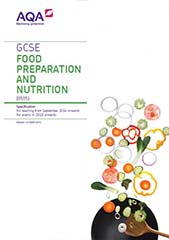3.5 Food choice
This section requires students to demonstrate their knowledge and understanding of the following subject content:
Factors affecting food choice
Factors which influence food choice
|
Content |
Students must know and understand |
Suggested application and food preparation skills |
|---|---|---|
|
To know and understand factors which may influence food choice. |
The following factors in relation to food choice:
Students must be able to cost recipes and make modifications. |
|
Food choices
|
Content |
Students must know and understand |
Suggested application and food preparation skills |
|---|---|---|
|
Food choice related to religion, culture, ethical and moral beliefs and medical conditions. |
|
|
Food labelling and marketing influences
|
Content |
Students must know and understand |
Suggested application and food preparation skills |
|---|---|---|
|
|
British and international cuisines
|
Content |
Students must know and understand |
Suggested application and food preparation skills |
|---|---|---|
|
Food products from British tradition and two different cuisines. Schools or colleges/students can select different cuisines to study Cuisine is defined as: ‘a style characteristic of a particular country or region where the cuisine has developed historically using distinctive ingredients, specific preparation and cooking methods or equipment, and presentation or serving techniques’. |
|
|
Sensory evaluation
|
Content |
Students must know and understand |
Suggested application and food preparation skills |
|---|---|---|
|
Importance of senses when making food choices: sight,
taste, touch and aroma
|
|
